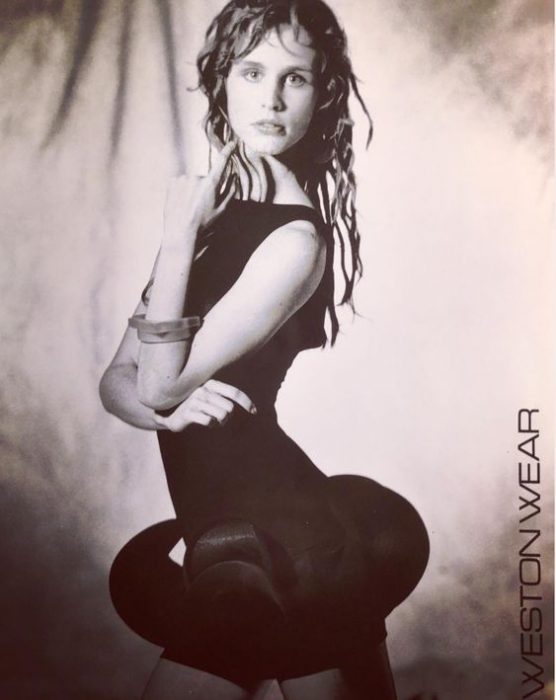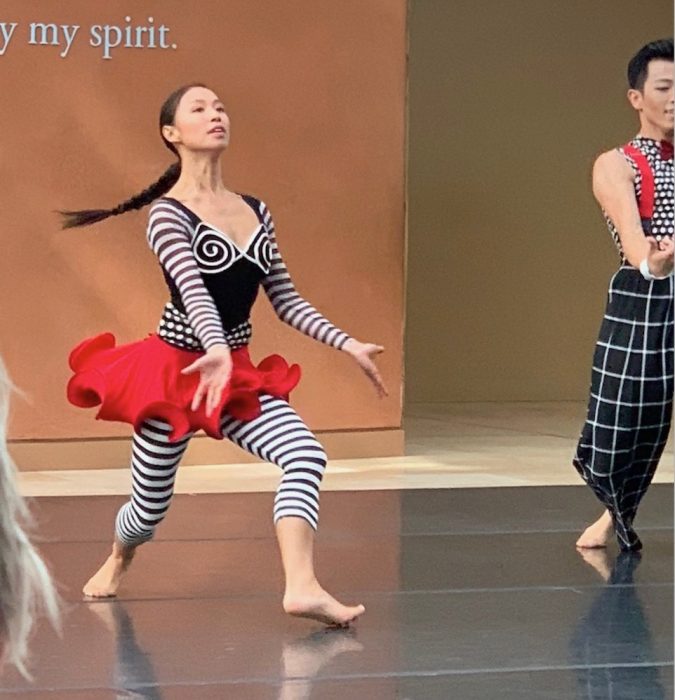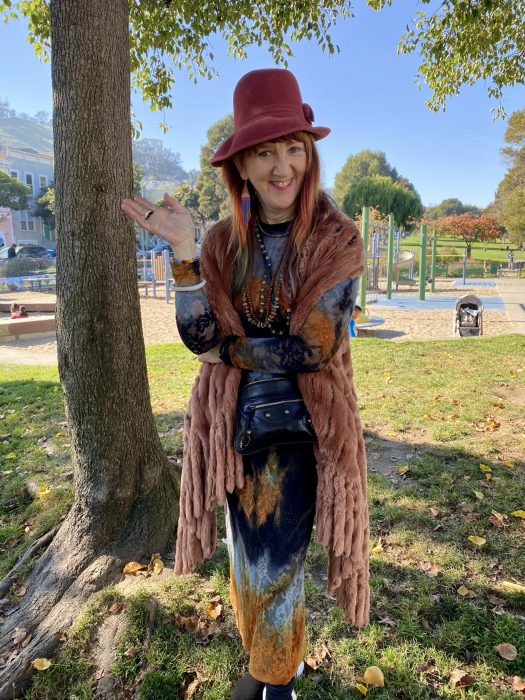Innovative use of new types of fabric put designer’s creations on the haute couture map

Technological innovation, but not the kind built on bits and bytes, helped launch the career of San Francisco fashionista Julienne Weston.
Her mastery of the overlock sewing machine (or, serger) and her embrace of cotton Lycra, a stretchy blend of natural fibers and spandex invented in 1980, made her creations stand out as she built a successful fashion design and manufacturing house.
“I could immediately see this was the fabric of the future,” Weston said. “The knees and butt of the pants didn’t bag. You looked fabulous and were comfortable at the same time. This was the beginning.”
Other innovations followed. The overlock was perfect for stretch fabric because it overcasts the edge of the fabrics while stitching them together – allowing some flex. “If you did a straight stitch with Lycra on a regular sewing machine and you stretched the fabric, it would break because there’s no give on the seam,” she said.

A second fabric breakthrough for Weston came in the early 1990s when pliant nylon mesh fabric hit the market Weston used colorful prints she found in Europe and imprinted them onto the mesh, giving her fabric the look and feel of a second skin. They were soon seen in clothing worn by the likes of Madonna, Michelle Obama and other celebrities.
Weston was creative in her use of financing as well. When she got her first big order, she had to figure out how to get mills to sell her fabric. The usual way was to work with a middleman, called a factor, who would set up the financing.
“Because we were just starting out, the factors wouldn’t work with us, so I created a direct line of credit through my dad’s bank,” she said. “Then I had to put up money to equal that amount to guarantee my credit to the mills.”
Weston went to family, friends, and friends of friends to secure loans. “I put their money into CDs and when the loans were due, I paid them back plus interest.”

Nonetheless, Weston was torn between two possible career paths. She majored in fashion as an undergraduate, but dance has always been a passion. One of five children, she was raised by a father who was a doctor and mother a concert pianist. She started ballet and piano lessons when she was just five. As a graduate student at Stanford University, she earned a master’s in education with an emphasis on dance.
It was there that she met a woman who introduced her to the overlock. Using cotton Lycra, she started sewing the drapey, pleated pants that would later become a top seller and sold them on the campus. After graduating in 1980, she moved to San Francisco to focus on a clothing business.
She founded Weston Wear (later Weston SF), a predominately wholesale design and manufacturing business that soon boasted clients in the U.S., Canada, and Japan. It was to last 38 years.
The business grew slowly. Weston’s first sales were to a sweater store in Berkeley. “I made leggings with cotton Lycra,” she said. “After wearing (Spandex) leggings all my life, it was great having cotton next to my skin.” When an associate suggested ads for the leggings in “Skiers World Magazine,” she got an order from a prisoner in Indiana. “I sold him a pair,” she said.
Soon she added jackets and circle skirts and had her mother and sisters throw shopping parties where friends could buy or order them.

A plethora of designs followed. She created the Pleated Pant, a popular seller for 20 years, the Jodhpur pant, the Big Top Shirt, the Henley top, the Raglan Top, and the Hugger Shirt.
Eventually, she designed the iconic Judy Dress, inspired by the daughter of the Jetsons, the popular TV cartoon family of the future. Its short skirt flared out in a circle from the body, its wavy hem held by bendable wire. “They lived in outer space,” said Weston. “It was an outer space stellar dress.”
She showed the dress and other designs at the 1983 Boutique Show in New York, at the time the clothing industry’s premier trade show and where she got her first big order.
Landing that order meant ramping up her business in a hurry. “We hired people, hustled to get the fabric, learned how to ship on time,” she said, “For the first order, I had to call everyone and get extensions.” She had already secured her financing, and this was the time to use it.

Although Weston had other designers in her employ, she remained the creative force. “I had rigorous training in dance, and on the piano. I was used to developing my creative skills, hard work and preparing for performance,” she said.
Her company sold to small boutiques throughout the country, as well as department stores like Nordstrom, Macy’s, Barney’s, I. Magnin and Saks Fifth Avenue. Kevin Coker, her husband of 29 years and a one-time dancer and contractor, eventually became president and chief financial officer of Weston Wear.
They also held weekend sales at their headquarters at 900 Alabama St., where the business was housed for 22 years. They opened two retail stores on San Francisco’s Valencia Street and eventually a store in Burlingame.
“By manufacturing close to home, and employing local talent, it gave me a sense of pride and belonging in my community,” she said.
The stores were successful for years, but as online shopping took off and sales declined on top of internal business issues, she decided to close the business.

Three years later, Weston, now 65, is still selling off the leftover fabric to wholesalers. She’s doing trunk shows at local boutiques and hosting occasional Maker Faires at her Dogpatch studio with other crafts people. And her husband is renovating the house she grew up in, in Lafayette. “We bought it from my siblings. We’ll move there in about three years.”
Weston always had a sense she was going to have her own business. “I didn’t have any fear; my way was just to plow on through,” she said. When she started the business, she had enough momentum that she knew the money would flow, but not before five years of borrowing.
“I built the business on instinct following my heart and then my gut,” she said. “Learning to trust my instincts has been the best guide throughout my business career and beyond.”






Dina Lisha
A lovely article about a very talented and creative woman!!